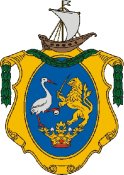Keszthely

Introduction of Keszthely
Alongside Balaton Keszthely is
the only settlement that has real town history. That is why the citizens of Keszthely
consider the city the capital of Balaton. The territory is continuously inhabited
since seven thousand years, but the written sources concerning its history are only
known since 1247. These denote that Keszthely has survived several crises, difficult
periods during the past 8 centuries: the one and a half century long Turkish era,
the epidemics and fires of the 18th century, the economic crisis of 1850-1860, the
1930s and following the 2nd World War.
The town was always able to renew, dared to chose other direction for development. This way Keszthely continuously expanded, blossomed with smaller interruptions. The outward appearance of the town, which is the result of an integral development of several centuries, is the visible sign of this. Most of the buildings are from the 19th-20th centuries, but the earliest ones were built in the 13th-14th centuries.
The Festetics Castle is the fourth biggest aristocratic mansion in the country, and also it is the most beautifully renovated. The building of the 19th century evokes the atmosphere of the monarchy is unique on the shore of Balaton. The remembrance of almost all architectural styles can be found in Keszthely.
Keszthely enriched a lot not only financially but also culturally during the past centuries. The citizens proudly cultivate the almost two centuries old tradition of the Helikon Festivals, they are proud that Keszthely is a school town and is in possession of higher educational institution since 1797. The first theatre was built already in 1862 and the programs and events of the Balaton Theatre and Congress Centre, inaugurated in 2002, serve not only the entertainment of the local people, but also that of people from the neighbourhood and visitors.
Keszthely lives on tourism first of all and the basis of it is the Balaton, which
is not only beautiful in the summer but in all seasons. The greatest painter of the
lake, Egry József said: “Balaton is the tear of joy of nature”, and we
can only agree with him
Sightseeing
Festetics
Castle
On the site of the mansion of the Gersei Pethő family, the construction of the castle was started by Kristof Festetics in 1745. It gained its final - neo-baroque - form in the 1880s. It miraculously avoided destruction during the second World War. As Helikon Castle Museum, it has been independent since 1974. Its library of 100000 volumes is the only complete aristocratic collection in Hungary to have been left intact. It is a museum (permanent and temporary exhibitions), a conference and cultural centre.
On the western façade of the stately home facing the park, there is a distinctive difference between the original Baroque parts and the towered part built in the 1880’s. The library wing was built by György Festetics between 1799 and 1801. There are several statues in the park; that of St Helen used to stand on the county boundary on the Iszap (Mud) Island, it was taken to Fenékpusztára and from there it was taken here.
Balaton Museum
The thought of establishing a museum in the area of the lake Balaton first occoured
in the last decade of the 19th century. The Balaton Museum Union was formed in June
1897.
The archaeological collection of Árpád Csák was exhibited in the building
of the former Economy Learning Center. The natural science department was formed,
the library was growing, and János Sági laid the foundations of the ethnography department.The
improvement of the various departments were helped by the financial support of the
government. Due to the good financial conditions Csák Árpád could carry out excavations
in Alsópáhok, in the field of Dobogó, Balatonhídvég and Újmajor.
The museum was
also given an independent building site.In 1913 the collection of the various departments
reached to the following numbers: relics: 9485, ethnography: 806, region history:
806, natural history: 3528. Th elibrary had 3630 volumes. During world war I there
was only a slight increase in the departments, but the defence history section became
an independent division at that time.The museum building was erected in the 1920\\\\\\\'ies.
The neobaroque building was disigned by Dénes Györgyi. The collections were placed
within the walls in 1935. The natural science exhibition was opened, then the archaeological
material was shown.By the fusion with the Darnay Museum of Sümeg the number of the
collected items significantly grew. However, the new items were Fnot exhibited, for
the museum was about to be nationalized. But this only took place in 1949.The farther
development was obstructed by the second world war. In March 1945 the wrapped materials
of Keszthely and Sümeg were put on a train, but a bomb destroyed the irrecoverable
values, together with those boxes of the Székely National Museum, which were entrusted
to the care of the Balaton Museum.The weakened museum only started to advance again
after the permanent exhibition arranged in 1949.The collection work after the war
was supervised by József Csalog (1949-1951) and Károly Gaál (1951-1956) in all the
departments. Between 1962 and 1979 more and more professional museologists were employed
to work for th emuseum. The permanent exhibition which opened in 1967 was based upon
the museum\\\\\\\'s own materials.The museum building was renovated between 1980 and
1986. Since 1986 a new and complex exhibition has been representing th elife of the
region of the Balaton. Many visitors are attracted to our temporal exhibitions of
numerous kinds. Currently the museum owns about 380 000 registered items.
The Island Baths
The first bathing house built on the water was completed in 1864. The first round
island bath was built in the 1880’s, which in 1893 was extended into a facility
consisting of two islands with a lavishly decorated entrance. In 1960, instead of
renovation, a new island made from steel and concrete slabs was created. Recently,
the original wooden structure has been reconstructed.
Source: http://www.keszthely.hu













